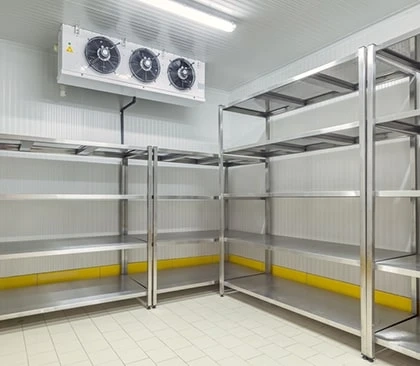In the world of food storage, pharmaceuticals, and various industries, maintaining the optimal temperature is crucial. Cold rooms and refrigeration systems play a vital role in preserving perishable goods, ensuring product quality, and preventing waste. In this blog post, we will delve into the importance of cold rooms and refrigeration and explore how they have become the backbone of temperature control.
The Need for Cold Rooms and Refrigeration:
The perishable nature of many products necessitates a controlled environment to prevent spoilage and extend their shelf life. Cold rooms and refrigeration systems offer the ideal solution by providing a consistent, low-temperature environment that inhibits bacterial growth, slows down enzymatic reactions, and preserves product freshness.
Versatility in Applications:
Cold rooms and refrigeration systems find applications in a wide range of industries. In the food industry, they are used to store fresh produce, dairy products, meat, seafood, and frozen goods. Pharmaceutical companies rely on these systems to preserve sensitive medications and vaccines. Cold rooms are also utilized in research laboratories, chemical storage facilities, and even morgues. The versatility of cold rooms and refrigeration systems makes them indispensable in various sectors.
Cold Room Design and Construction:
Cold rooms are purpose-built structures designed to maintain low temperatures. They are typically constructed using insulated panels that provide thermal resistance and minimize heat transfer. The panels are sealed together to create an airtight enclosure, ensuring that the desired temperature is maintained consistently. Doors with proper insulation and efficient sealing mechanisms are essential to prevent temperature fluctuations.
Refrigeration Systems: The Heart of Cold Rooms:
Refrigeration systems are the heart of cold rooms, responsible for cooling and maintaining the desired temperature. These systems utilize a refrigerant that undergoes a continuous cycle of compression, condensation, expansion, and evaporation. The refrigerant absorbs heat from the cold room and releases it outside, allowing for efficient temperature control.
Modern refrigeration systems often employ advanced technologies such as electronic controls, energy-efficient compressors, and sensors to monitor temperature and humidity levels. These systems are designed to optimize energy consumption, reduce environmental impact, and ensure precise temperature regulation.
Benefits of Cold Rooms and Refrigeration:
a) Product Quality and Safety: Cold rooms and refrigeration systems provide the ideal conditions for preserving product quality and ensuring consumer safety. By maintaining low temperatures, these systems slow down the growth of bacteria, yeast, and molds, thereby reducing the risk of foodborne illnesses and maintaining pharmaceutical efficacy.
b) Extended Shelf Life: Cold rooms help extend the shelf life of perishable goods, reducing waste and ensuring a longer storage period. By controlling temperature and humidity levels, these systems slow down the natural deterioration process, allowing businesses to optimize their inventory management.
c) Increased Efficiency and Cost Savings: Well-designed cold rooms and efficient refrigeration systems contribute to significant energy savings and operational efficiency. By utilizing modern technologies and insulation techniques, businesses can reduce energy consumption and minimize the environmental impact while maximizing cost savings.
d) Regulatory Compliance: Cold rooms play a crucial role in complying with regulatory standards and guidelines for various industries. Whether it's food safety regulations, Good Manufacturing Practices (GMP) for pharmaceuticals, or storage requirements for chemicals, cold rooms, and refrigeration systems provide the necessary infrastructure to meet these standards.
Maintenance and Best Practices:
To ensure the optimal performance and longevity of cold rooms and refrigeration systems, regular maintenance is essential. This includes monitoring temperature and humidity levels, cleaning and defrosting, inspecting insulation, and conducting routine equipment checks. Adhering to best practices and working with experienced professionals can help prevent breakdowns, minimize downtime, and maximize the lifespan of these critical systems.
Conclusion:
Cold rooms and refrigeration systems have become the backbone of temperature control in numerous industries. Their ability to create a controlled environment, extend product shelf life, and comply with regulatory standards has transformed the way perishable goods are stored and preserved. As technology continues to advance, cold rooms and refrigeration systems will play an increasingly important role in ensuring product quality, minimizing waste, and meeting the evolving needs of industries around the globe.


